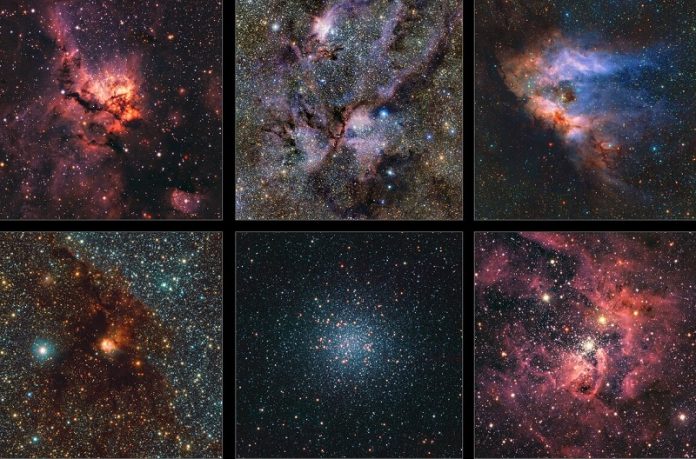
Astronomers have created the most detailed infrared map of our Milky Way galaxy ever made, revealing more than 1.5 billion objects.
This incredible achievement was made possible by the European Southern Observatory’s (ESO) VISTA telescope, which has been observing the central regions of our galaxy for over 13 years.
The result is a massive dataset containing 500 terabytes of information, making it the largest project ever undertaken with an ESO telescope.
The findings, detailed in a paper published in Astronomy & Astrophysics, mark a significant leap in our understanding of the Milky Way.
“We made so many discoveries, we have changed the view of our galaxy forever,” said Dante Minniti, the astrophysicist from Universidad Andrés Bello in Chile who led the project.
The new map was created using 200,000 images taken by VISTA, which stands for the Visible and Infrared Survey Telescope for Astronomy.
VISTA is located at ESO’s Paranal Observatory in Chile and is specifically designed to map large areas of the sky.
It uses an infrared camera, VIRCAM, which can see through the dust and gas that often block our view of the Milky Way, allowing us to observe the galaxy’s hidden regions.
This detailed map covers an area of the sky equivalent to 8,600 full moons and contains about 10 times more objects than a previous map released by the same team in 2012.
The map includes newborn stars often hidden in dust, globular clusters that are home to some of the oldest stars in the Milky Way, and even cold objects like brown dwarfs and rogue planets.
The observations for this project began in 2010 and continued until mid-2023, spanning a total of 420 nights.
By repeatedly observing each section of the sky, the team was able to not only locate these objects but also track their movements and changes in brightness.
This has allowed scientists to create an accurate 3D map of the inner Milky Way, revealing areas that were previously hidden by dust.
The project also provided new insights into hypervelocity stars—stars that move rapidly after being flung from the Milky Way’s center, likely due to a close encounter with the galaxy’s supermassive black hole.
The data from this survey, known as the VISTA Variables in the Vía Láctea (VVV) and its extended project VVVX, has already led to over 300 scientific papers.
Even though the surveys are now complete, the data will continue to be analyzed for decades, promising many more discoveries. Meanwhile, ESO’s Paranal Observatory is gearing up for future research, with new instruments set to further explore the mysteries of the Milky Way.



